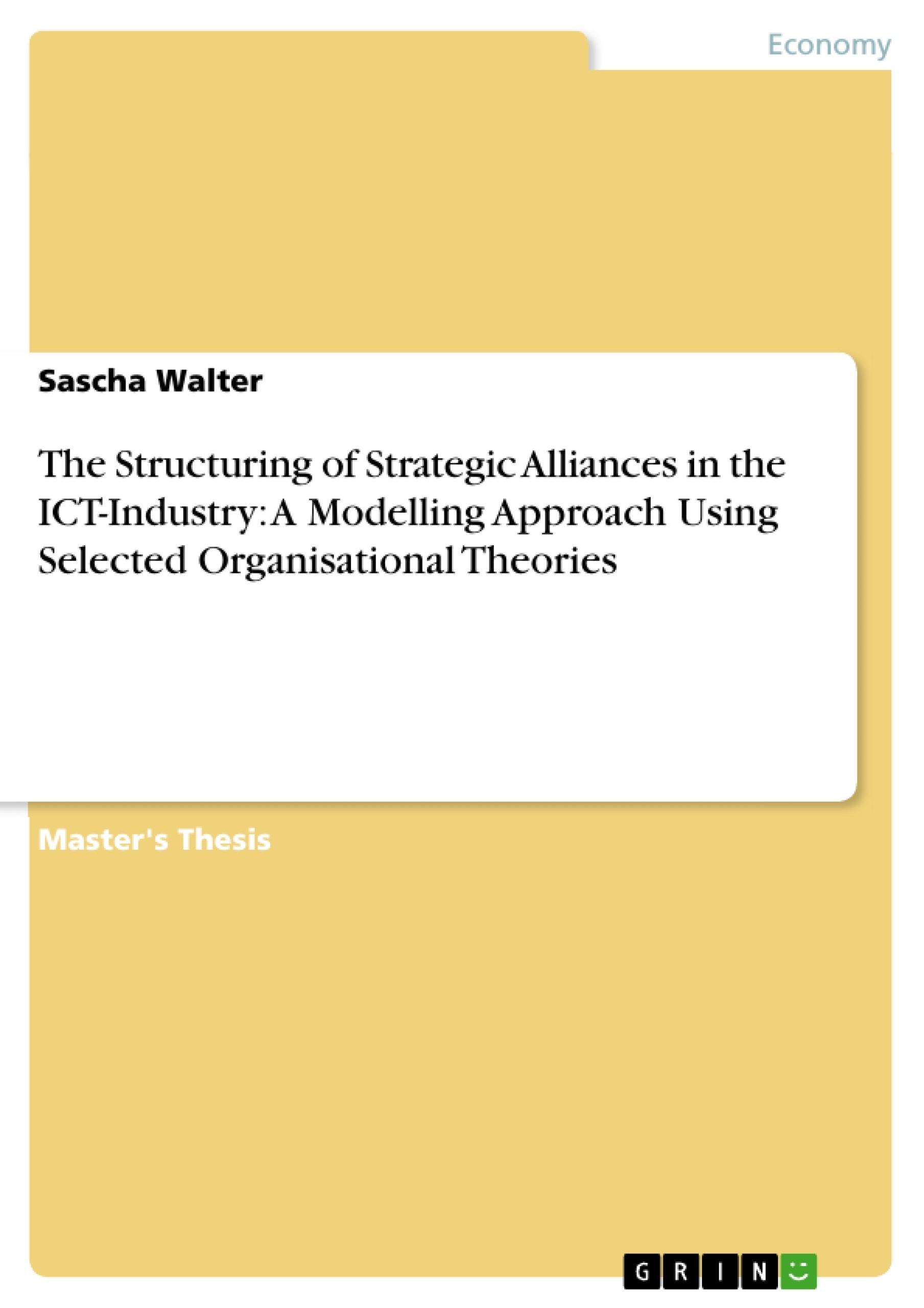This study examines what factors determine the choice of governance structure made by
alliance partners in the ICT-industry. First, the explanatory power of the transaction cost
theory, the resource-based view, the structural contingency approach, strategic choice theory,
resource dependence theory, organisational ecology and principal agent theory to answer this
question is surveyed. A deeper analysis using transaction cost theory, resource-based view
and structural contingency approach is employed to develop three models of alliance
structuring. Propositions related to the models are then tested on a sample of 101 strategic
alliances in the ICT-industry. The findings suggest that there exist five influential factors: (1)
the existence of alliance-specific investment by the partners, (2) the number of functional
areas contained by the alliance, (3) a limited duration of the alliance, (4) the type of resources
contributed by the partners, and (5) uncertainty of the tasks of the alliance. These factors are
then recombined to form one integrated model. The success of this approach and the
usefulness of such a modelling approach in general are discussed alongside future directions
for research.
Inhaltsverzeichnis (Table of Contents)
- 1. INTRODUCTION.
- 2. THEORETICAL BACKGROUND AND PREVIOUS WORK
- 2.1. Approach to Construct the Theoretical Framework
- 2.2. Definitions of Strategic Alliances
- 2.3. Classifications of Strategic Alliances
- 2.4. Review of Previous Work
- 2.5. Review of Theoretical Approaches
- 2.6. Theoretical Framework and Propositions For This Study
- 3. METHODOLOGY
- 3.1. Objective of the Survey
- 3.2. Unit of Analysis
- 3.3. Methods of Data Collection
- 3.4. Methods of Analysis
- 4. RESULTS
- 4.1. Findings of Univariate Analysis
- 4.2. Findings of Bivariate Analysis
- 4.3. Findings of Multivariate Analysis
- 5. DISCUSSION
- 5.1. Position of the Sample
- 5.2. Factors of the Governance Choice
- 5.3. The Explanatory Power of an Integrated Approach
- 5.4. Contributions and Implications
- 6. CONCLUSIONS
Zielsetzung und Themenschwerpunkte (Objectives and Key Themes)
This dissertation aims to analyze the governance structures of strategic alliances in the ICT-industry, focusing on the factors influencing the choice of governance structures. It utilizes selected organizational theories to develop a comprehensive framework for understanding the dynamics of these alliances. The research investigates the theoretical underpinnings of alliance governance and explores its application within the context of the ICT-industry.
- Governance Structures of Strategic Alliances
- Factors Influencing Governance Choice
- Organizational Theories in Alliance Formation
- Application of Theoretical Frameworks to the ICT-Industry
- Implications for Understanding Strategic Alliances
Zusammenfassung der Kapitel (Chapter Summaries)
Chapter 1 introduces the research topic, providing background information and outlining the research questions. Chapter 2 presents a comprehensive theoretical framework, exploring various definitions, classifications, and existing literature on strategic alliances. The chapter reviews relevant organizational theories, including transaction cost theory, resource-based view, and strategic contingency theory, to develop a robust theoretical foundation for the study. Chapter 3 outlines the methodology employed, including the objective of the survey, unit of analysis, data collection methods, and analytical approaches. Chapter 4 presents the results of the analysis, focusing on univariate, bivariate, and multivariate findings. Finally, Chapter 5 provides a thorough discussion of the results, exploring the implications and contributions of the study for understanding alliance governance in the ICT-industry.
Schlüsselwörter (Keywords)
The primary keywords and focus topics of this dissertation are: strategic alliances, ICT-industry, alliance governance, transaction cost theory, resource-based view, strategic contingency theory, governance structures, organizational theories, industry dynamics, alliance formation, and empirical analysis.
- Arbeit zitieren
- Sascha Walter (Autor:in), 2002, The Structuring of Strategic Alliances in the ICT-Industry: A Modelling Approach Using Selected Organisational Theories, München, GRIN Verlag, https://www.hausarbeiten.de/document/15704



